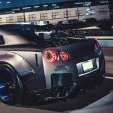R33 Starting Issue
Announcements
-
Similar Content
-
Latest Posts
-
By BASHERnissan · Posted
Hi guys my TPS voltage is reading over 2v at idle. My Haltech ECU is reading around 40% throttle position at idle also which is really strange. Note the actual throttle position sensor is brand new… anyone have any experience with this or know how to calibrate it on Haltech ? -
By joshuaho96 · Posted
The OEM disk will not work on any AEM ECU, you need to use the one they made. You shouldn't have to flip the CAS or whatever you were describing, if you set the ignition sync offset correctly it can't backfire. Make sure you're using a spark plug lead on coil 1 instead of the timing loop to avoid weird issues with the timing light. Double check that your timing settings are actually correct, like is the 24 tooth configured correct or should it actually be 12 teeth for 1 crank revolution? I also found this: 305817248-AEM-Undocumented-Settings-v1-2.pdf -
By Dose Pipe Sutututu · Posted
Yeah, I don't believe the M35 uses a deadhead system. -
Have you done your thinking backwards? 3 bar, 43.5 psi pressure drop being the presumed specification for an injector, means you need 3 bar upstream when they are firing into atmospheric pressure, and more upstream pressure than that when on boost (you add your boost to your rail pressure to maintain 3 bar across the injector) and you need..... less pressure upstream when you have vacuum in the manifold. So, presuming that you're idling at -10 psi, then you only need ~23 psi in the rail. I realise that I did not need to say all of that to you specifically Matt, once you'd realised your mistake. It's mostly there for complete clarity for others.
-
By Dose Pipe Sutututu · Posted
Have you reached out to the guys at Spool Imports? They are a Ross dealer, I can imagine they would have the rings just sitting on the shelf (I could be wrong).
-





Recommended Posts
Create an account or sign in to comment
You need to be a member in order to leave a comment
Create an account
Sign up for a new account in our community. It's easy!
Register a new accountSign in
Already have an account? Sign in here.
Sign In Now